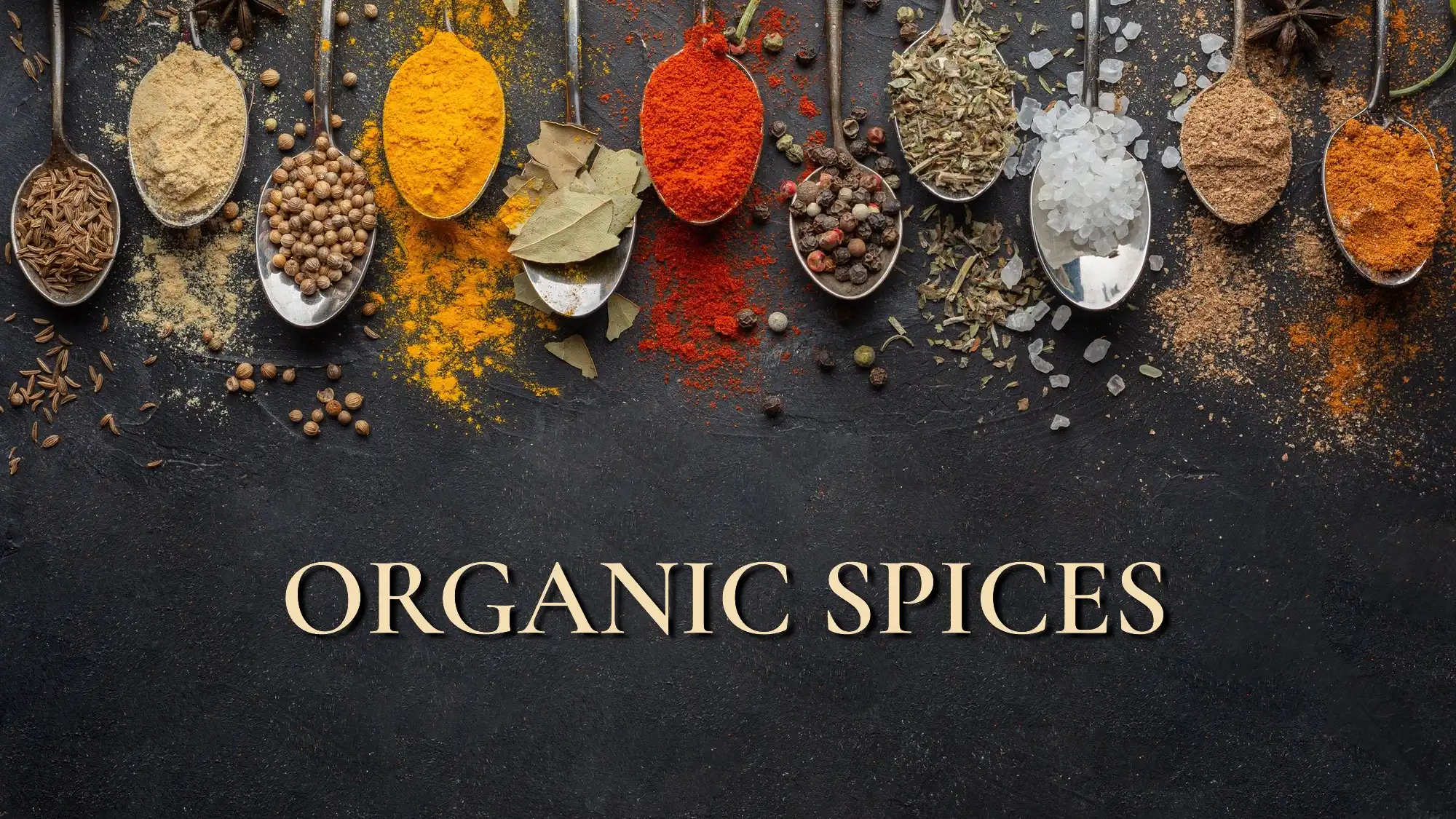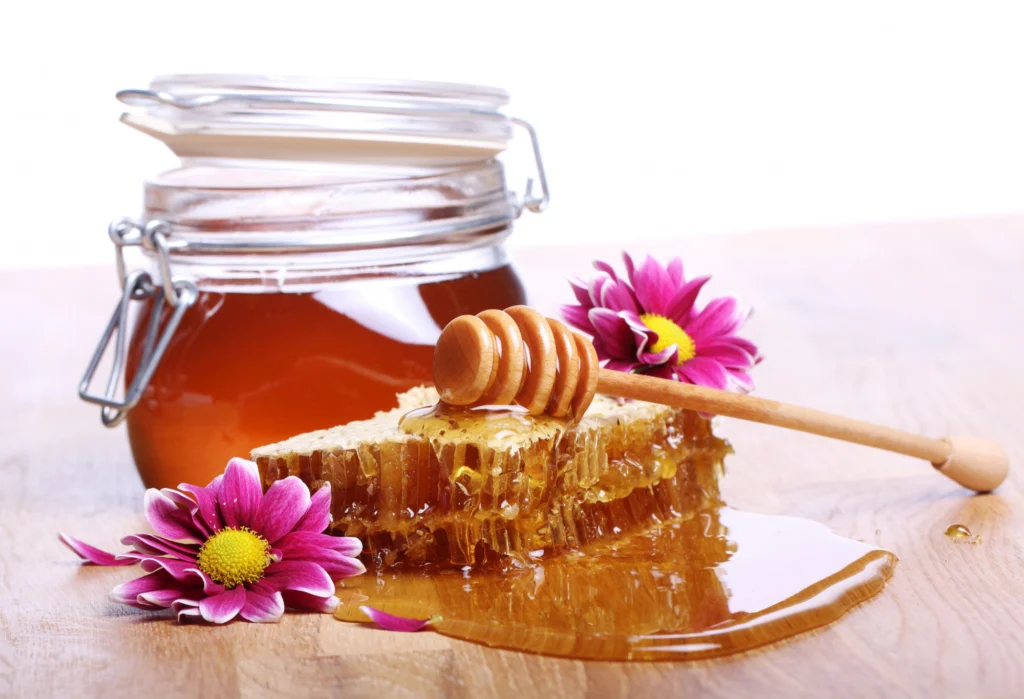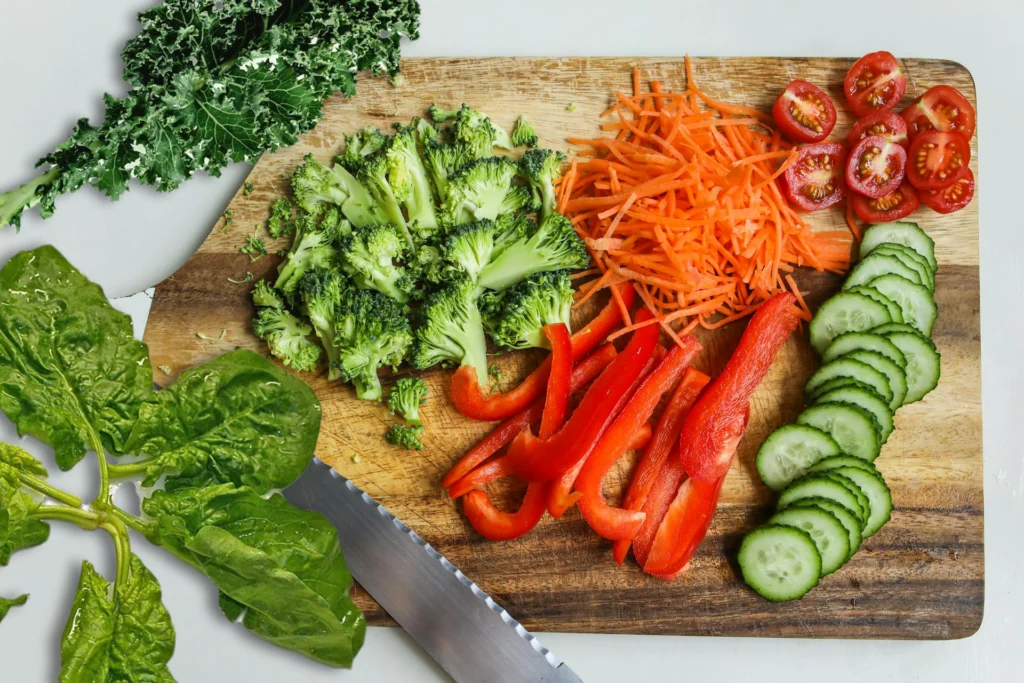Opening a jar of organic spices — whether it’s cinnamon or crushed black pepper — doesn’t just change the taste. It transforms the whole experience. The aroma. The warmth. The tiny kick of flavor that makes you pause for a second mid-bite.
And if you’re leaning into clean eating, those little sprinkles can do a lot more than please your palate. They can support digestion, ease inflammation, and even deliver key antioxidants — all without reaching for a supplement.
But not all spices are created equal. This guide walks you through why organic matters, which spices pack the biggest punch, and how to use them in everyday cooking and clean snacks.
Let’s dig in — one flavorful pinch at a time.
What Makes Organic Spices Truly Organic
Organic spices come from plants grown without synthetic pesticides, chemical fertilizers, or genetically modified organisms (GMOs). They’re processed without artificial preservatives or irradiation — a method sometimes used in conventional spice production to kill microbes, but which may reduce nutrient content and flavor.
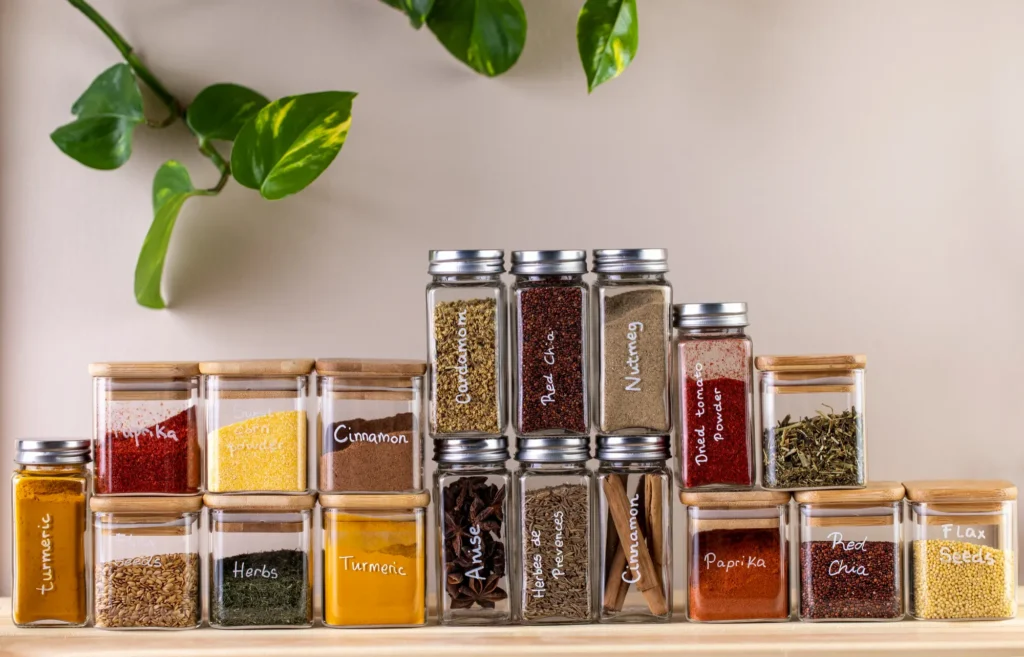
When labeled USDA Organic, that spice has met strict federal standards at every stage: from how the seeds were sourced to how it was harvested, dried, ground, and packaged.
This matters more than you might think. Many conventional spices are grown in countries where pesticide regulation is loose, and residues can linger through processing. Choosing organic helps reduce your exposure to those chemicals — and supports cleaner soil and farming ecosystems too.
The Big Benefits of Going Organic With Spices
Cleaner, Safer Flavor
You’re not just tasting better flavor — you’re avoiding unwanted extras. Organic spices are less likely to carry pesticide traces, synthetic additives, or anti-caking agents. What’s left is the pure plant, in its most potent form.
Higher Antioxidant Potential
Some research suggests that organic herbs and spices may contain higher levels of beneficial plant compounds like flavonoids and polyphenols. These act as antioxidants in the body — fighting free radical damage and supporting immune resilience.
You Actually Use Less
Here’s something surprising: many organic spices are stronger in aroma and flavor because they’re not over-processed or irradiated. A little goes a long way — and that means better results with fewer shakes from the jar.
Top Organic Spices Worth Keeping in Your Kitchen
Not all spices deserve a permanent spot on your shelf — but these ones do. Each has a well-documented health benefit and a flavor profile that makes clean cooking both exciting and nutrient-rich. Whether you’re building a spice rack from scratch or upgrading old pantry staples, these five organic essentials deliver the most bang per pinch.
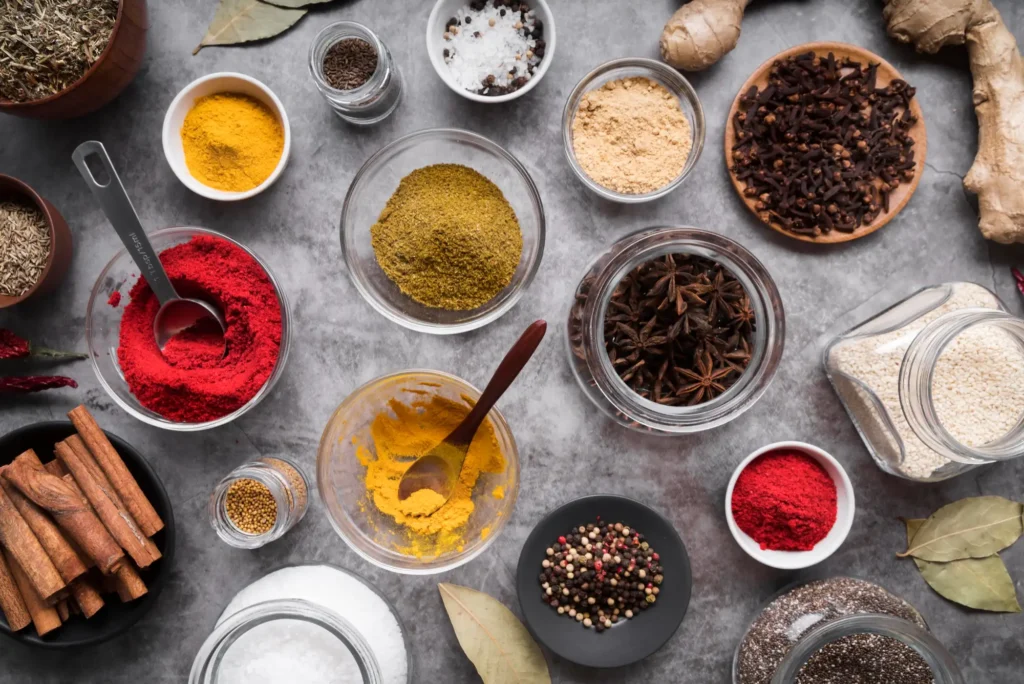
Organic Turmeric
Bright yellow, earthy, and famous for curcumin — a compound with strong anti-inflammatory benefits. Best used in golden milk, curries, or even sprinkled over roasted cauliflower.
Pair it with black pepper to boost absorption (up to 2000% more effective according to studies).
If you’re looking for a simple way to enjoy turmeric beyond cooking, this Organic Turmeric Ginger Tea is a soothing and powerful daily ritual. It blends anti-inflammatory ingredients with clean flavor — perfect for cold mornings or post-meal relaxation.
Ceylon Cinnamon: A Must-Have Among Organic Spices
Supports blood sugar control, adds warmth to both savory and sweet dishes, and makes oatmeal actually taste exciting. Ceylon cinnamon (aka “true” cinnamon) is preferred over cassia due to lower levels of coumarin, a compound that can be harmful in large amounts.
Use it in baking, chia puddings, or mixed with a touch of sea salt on sliced apples.
Organic Ginger
Good for nausea, digestion, and inflammation. Fresh ginger works well in teas and smoothies, while dried ground ginger adds heat to curries and spice rubs.
A research review published in International Journal of Preventive Medicine analyzed studies between 2000 and 2010 and confirmed that key compounds in ginger — like gingerols and shogaol — may offer anti-inflammatory and antioxidant benefits. While the review encourages further research, the evidence so far supports ginger’s traditional role as a healing root.
Organic Cumin
Earthy and aromatic, cumin supports digestion and may improve gut flora. Try it with sautéed greens, stews, or sprinkled into your favorite taco filling.
Bonus: its savory profile lets you reduce added salt.
Black Pepper: One of the Most Versatile Organic Spices
Besides giving everything a lift, black pepper contains piperine — which helps your body absorb nutrients like turmeric’s curcumin or green tea catechins more effectively.
For anyone trying to eat smarter, it’s more than a seasoning. It’s a functional add-on.
How to Use Organic Spices in Cooking
Spices don’t just sit in your cabinet waiting for soups. Here’s how to bring them into regular meals without fuss.

In Oil and Fat
Spices bloom in heat. That means sautéing turmeric or cumin in olive oil before adding vegetables deepens their flavor and releases more aroma. Try it when stir-frying greens or starting a soup base.
In Dry Rubs and Marinades
Mix smoked paprika, garlic powder, oregano, and chili flakes for a quick dry rub over tofu or organic chicken. Or whisk cinnamon and ginger into a maple-tahini marinade for roasted carrots. These blends not only add flavor but also deliver anti-inflammatory benefits from spices like ginger and paprika. For best results, let your protein marinate for at least 30 minutes to allow the flavors and nutrients to fully absorb into the food.
Or look at how it’s been done for generations — spices like fennel, ajwain, even poppy and seeds roasted low and slow — tossed into what folks now call a deeply rooted, spiced-up energy mix, but really, it’s just old wisdom on a plate.
As a Sprinkle
Spices aren’t just for meals — they’re an easy upgrade to your snacks too. Try a pinch of cinnamon on sliced apples, turmeric on roasted nuts, or chili powder on air-popped popcorn.
Even cottage cheese chips become something new when topped with a sprinkle of garlic powder or smoky paprika. It’s a simple way to add bold flavor without adding sugar, oils, or artificial additives.
If you haven’t tried our protein-packed version of this trending snack yet, check out our go-to method for making crispy cottage cheese chips — a clean and crunchy base just waiting for your favorite seasoning combo.
Don’t Forget Blends: Homemade Organic Seasonings
Instead of buying pre-packaged blends (which often contain added salt, sugar, or “natural flavors”), consider making your own spice mixes using organic basics.

Basic All-Purpose Blend
- 1 tbsp garlic powder
- 1 tbsp onion powder
- 1 tsp paprika
- ½ tsp turmeric
- ½ tsp black pepper
Use on roasted veggies, baked potatoes, or grilled protein.
Sweet Spice Mix
- 1 tbsp cinnamon
- ½ tsp ginger
- ½ tsp cardamom
- ¼ tsp nutmeg
This mix brings a cozy, gently spiced flavor to anything you sprinkle it on. I like tossing it over warm oats or blending it into chia pudding for an easy morning upgrade. It also pairs well with berry-based snacks — especially smoothie bowls where cinnamon and cardamom round out the sweetness.
If you’re into clean breakfasts with a bit of flavor, try this organic berry smoothie bowl. It’s light, refreshing, and works perfectly with a touch of spice.
How to Store Spices and Keep Them Potent
Organic spices don’t last forever — and poor storage can make them lose their punch fast.
- Store in a cool, dark cabinet away from heat or light
- Use airtight glass jars
- Label with purchase dates (most spices are freshest within 6–12 months)
Pro Tip: Whole spices like peppercorns or cumin seeds stay potent longer than ground. Buy whole when possible and grind as needed for maximum aroma.
Common Myths About Organic Spices (And What’s Actually True)
“They Don’t Taste Any Different”
False. Many people report a richer, more vibrant flavor with organic — especially when the spices are fresh and properly stored.
“They’re Always Expensive”
Organic spice prices have dropped over the years. And since you often use less per recipe, they last longer. Buying in bulk or from reputable organic co-ops helps reduce cost per ounce too.
“Salt-Free Means Flavor-Free”
This one’s way off. Using spices lets you lower sodium without losing flavor — something that’s crucial if you’re trying to eat clean or manage blood pressure.
Final Thoughts on Organic Spices and Their Big Impact
If you’re building a clean kitchen, the spice rack is where transformation starts. Organic spices give you more control over what goes into your meals — and what doesn’t. No hidden preservatives. No synthetic extras. Just real flavor with real benefits.
From sprinkling cinnamon into your breakfast bowl to crafting your own blends for savory dinners, these tiny additions can elevate your food and your health with almost zero effort.
Start with a few core favorites. Use them often. And get creative — because clean eating doesn’t have to be boring.

